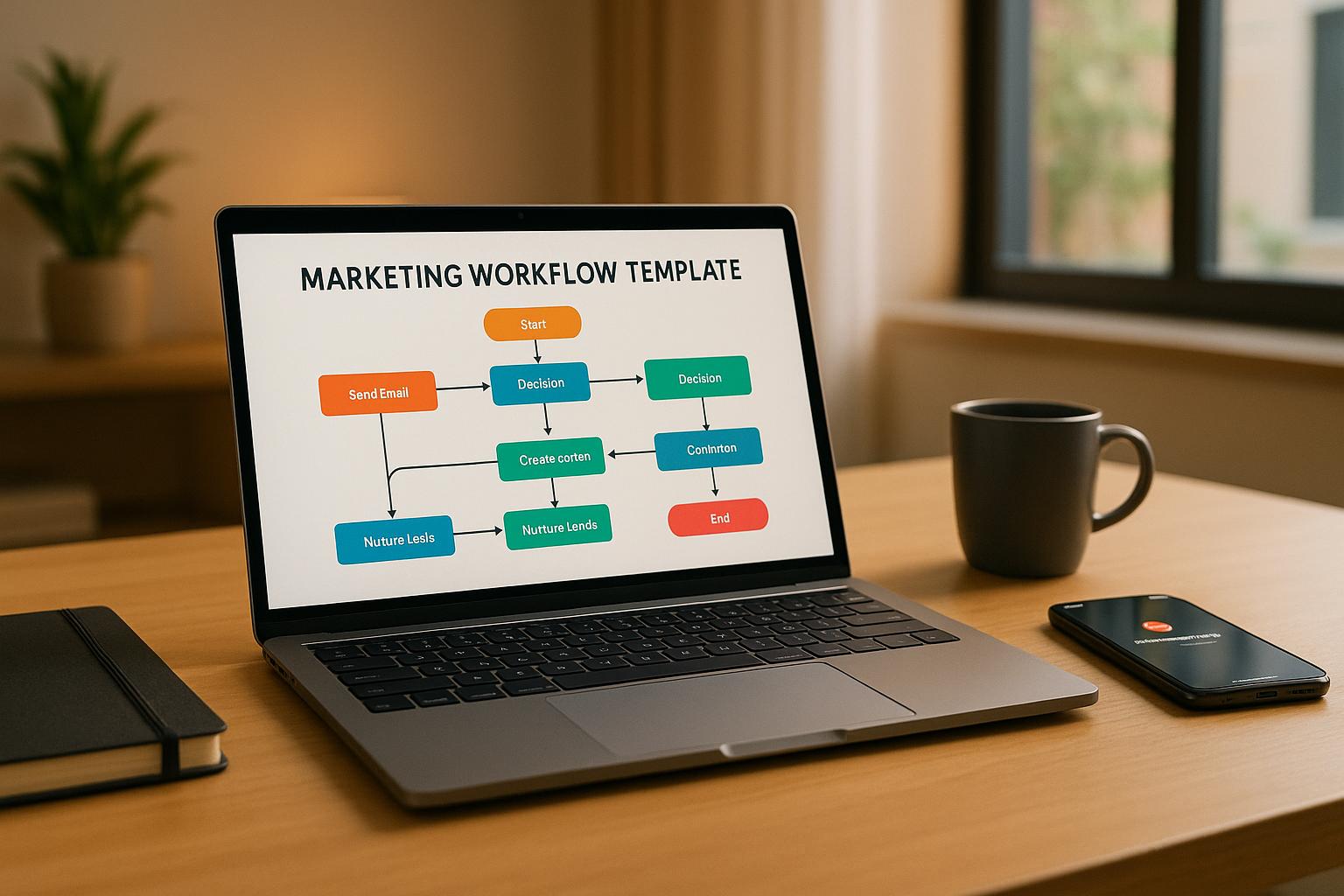Real estate chatbots can save time and boost efficiency, but only if they work well. Poor performance leads to frustration, lost leads, and reduced customer satisfaction. Here’s a quick summary of common issues and solutions:
Common Issues:
- Incorrect Information: Sharing wrong property details.
- Missing Context: Failing to handle follow-up questions.
- Poor Escalation: Struggling with complex queries.
- Robotic Responses: Reducing user engagement.
- Integration Problems: Difficulty connecting with CRMs and listing platforms.
Solutions:
- Regularly update training data for accuracy.
- Use NLP tools for natural, conversational responses.
- Set clear rules for human handoff in complex cases.
- Standardize data formats and optimize API integrations.
- Personalize responses based on client preferences.
Why It Matters:
- 30% of users abandon purchases due to bad chatbot experiences.
- Personalized replies can boost property viewings by 40%.
- Better integration reduces errors and improves lead generation.
By fixing these issues, chatbots can qualify leads faster, improve client satisfaction, and increase conversions.
Fixing Communication Errors
Common Chatbot Mistakes
Real estate chatbots often run into issues that can frustrate buyers and sellers. One common problem is failing to understand property-specific questions that fall outside their pre-programmed scripts, leaving users dissatisfied.
Here are some frequent errors and how they affect real estate interactions:
| Error Type | Impact on Real Estate | Solution |
|---|---|---|
| Incorrect Information | Sharing wrong property details or pricing | Perform regular data checks |
| Missing Context | Fails to handle follow-up questions properly | Add conversation memory |
| Poor Escalation | Struggles with complex inquiries | Set clear rules for human handoff |
| Robotic Responses | Reduces user engagement | Use natural language patterns |
These missteps can harm customer interactions, resulting in lost leads and a damaged reputation for real estate agencies. Improving chatbot communication is key to addressing these challenges.
Making Responses More Accurate
Improving chatbot accuracy requires a structured approach. Some platforms have seen measurable improvements by implementing specific strategies.
Steps to enhance chatbot performance:
-
Improve Training Data
Use detailed, property-focused data for training. Regularly review chat logs to fill gaps in knowledge and correct errors. -
Leverage Natural Language Processing (NLP)
NLP tools help chatbots understand user sentiment and discuss property details in a conversational way. -
Use Visual Flow Design Tools
Platforms like Dialogflow CX offer visual tools to create conversation flows. These tools make it easier to design responses for common real estate queries and scenarios. -
Test and Refine Regularly
Track performance with analytics, focusing on points where users abandon chats or request human assistance. Make adjustments as needed.
It’s also crucial to be upfront about what the chatbot can and can’t do. Always provide a clear option for users to connect with a human agent for complex property questions. This approach has been shown to maintain an 88% helpfulness rate and boost customer satisfaction by 10%.
Creating Custom Chatbot Responses
Why Custom Messages Matter
Tailored chatbot responses can make a big difference in real estate. Research shows that personalized interactions can boost property viewings by 40%. This happens because specific messages cater to individual client needs, unlike generic replies.
For example, Capital One’s chatbot "Eno" saw a 40% increase in product recommendations and a 25% rise in conversions by using personalized messaging. The same approach works well in real estate.
Here’s how custom responses can benefit real estate:
| Benefit | Impact on Real Estate | Measured Result |
|---|---|---|
| Instant Engagement | Quick replies to property inquiries | 82% of consumers expect instant replies |
| Lead Quality | Attracts better-qualified prospects | 40% increase in qualified leads |
| Response Accuracy | More relevant property recommendations | 30% higher engagement rates |
These advantages highlight why personalization is essential and lead directly into actionable strategies.
Steps to Personalize Messages
Customizing chatbot responses can significantly improve lead engagement. Follow these steps to create more tailored interactions:
-
Set Up Data Collection
Gather essential details like property type, budget, preferred locations, buying or selling timeline, and desired amenities. -
Build a Knowledge Base
Create a database that includes property listings, FAQs, lease agreements, market trends, and neighborhood information. -
Customize Responses
Use collected data to refine replies. For example, Bo.fi uses location and price preferences to guide users toward suitable property searches.
You can further personalize responses by considering:
- User interactions
- Saved searches
- Clicked listings
- Stated preferences
- Time of day
- User location
Connecting Chatbots with Other Tools
Common Connection Problems
Integrating chatbots with other systems is essential for smooth operations, especially in real estate. However, many chatbots face challenges when connecting with CRMs and listing platforms. In fact, 55% of businesses consider seamless integration critical for generating quality leads. When these issues aren’t resolved, they can disrupt lead generation and weaken client engagement.
Here are some common connection problems:
| Problem Type | Impact | Common Cause |
|---|---|---|
| Data Incompatibility | Incorrect property information | Systems using mismatched data structures |
| API Limitations | Slow response times | Limited or outdated API versions |
| Sync Delays | Outdated listing information | Delayed data synchronization |
| Security Gaps | Data privacy risks | Weak encryption protocols |
"Integrating chatbots with CRM systems enables the seamless flow of data between the two, creating a powerful synergy that enhances customer experiences." – Ubique Digital Solutions
How to Fix Connection Issues
You can address integration challenges with these targeted solutions:
- Standardize Data Formats: Use middleware to align data structures and prevent errors during transfers.
- Optimize API Integrations: Set up webhooks for real-time property listing updates.
- Strengthen Security: Implement HTTPS, enforce access controls, encrypt data transfers, and schedule regular security audits.
- Monitor Performance: Use analytics to identify and resolve bottlenecks. For instance, Agent iChat has successfully integrated with platforms like Follow Up Boss, BombBomb, and Brivity by employing this approach.
To keep your chatbot running smoothly, consider scheduling data transfers during off-peak hours. This helps prevent system overloads, ensuring consistent performance even when handling large amounts of property data.
sbb-itb-2f9da9d
AI Chatbots for Real Estate Websites: A Guide for Buyers and Sellers
Getting More Leads from Chatbots
Once integration issues are sorted out, the next step is to focus on improving how you capture leads. With better data accuracy and smoother system connectivity, you can use targeted strategies to turn potential clients into actual leads.
How Chatbots Rate Leads
Today’s real estate chatbots use smart methods to rank and prioritize potential clients. By analyzing how visitors interact, these tools assess how ready someone is to take the next step in their real estate journey.
| Lead Qualification Criteria | Purpose | Impact on Score |
|---|---|---|
| Budget Range | Checks financial compatibility | High priority |
| Property Type Interest | Matches client with inventory | Medium priority |
| Timeline to Purchase/Sell | Measures urgency | High priority |
| Location Preferences | Aligns with market focus | Medium priority |
| Contact Information | Enables follow-ups | Essential |
Once leads are scored, the focus shifts to engaging with them in a meaningful way.
Tips to Convert More Leads
Turning initial inquiries into solid leads requires creating conversational flows that guide potential clients toward taking action.
Here are some strategies to boost lead conversion:
- Immediate Engagement: SpainForSale‘s chatbot starts by asking about key property details and offers a helpful Buyer’s Guide in exchange for contact information.
-
Personalized Interactions:
- Ask specific questions to understand individual needs.
- Recommend properties tailored to their preferences.
- Share valuable market insights right away.
- Automatically schedule viewings or consultations.
-
Strategic Data Collection: Focus on gathering useful details like:
- Budget range
- Preferred neighborhoods
- Desired property type
- Timeline for making a decision
- Preferred communication methods
Combining automated responses with opportunities for human interaction is key. This balanced approach not only boosts lead conversion rates but also ensures clients feel valued throughout the process.
Conclusion: Action Steps
Summary of Problems and Solutions
Real estate chatbots often face challenges that limit their effectiveness. Here’s a quick look at common issues and how companies have tackled them:
| Challenge | Solution | Impact |
|---|---|---|
| Poor Response Accuracy | AI-powered NLP implementation | 79% accurate responses to routine questions |
| Integration Issues | Cloud-based solutions with API support | 30% reduction in support costs |
| Lead Generation | Smart pre-chat surveys | 138% increase in lead capture (Endeksa case study) |
| Customer Satisfaction | Real-time feedback collection | 88% helpfulness rate achieved |
These examples can serve as a roadmap for improving your chatbot’s performance.
Next Steps for Implementation
To make your chatbot more effective, focus on these key areas:
Platform Selection and Setup
- Pick AI-powered platforms that work seamlessly with your CRM and property management systems.
- Compare costs: Platforms like Landbot start at €30/month for 500 chats, while Chaport offers premium features for $15 per operator per month.
Performance Optimization
- Add proactive live chat features to engage visitors based on their browsing behavior.
- Automate tasks like scheduling showings and managing open house RSVPs.
Data Management
- Analyze support tickets to create structured Q&A content.
- Regularly update AI models with the latest market data to maintain accuracy.
- Ensure strong security measures are in place to protect sensitive customer information.



